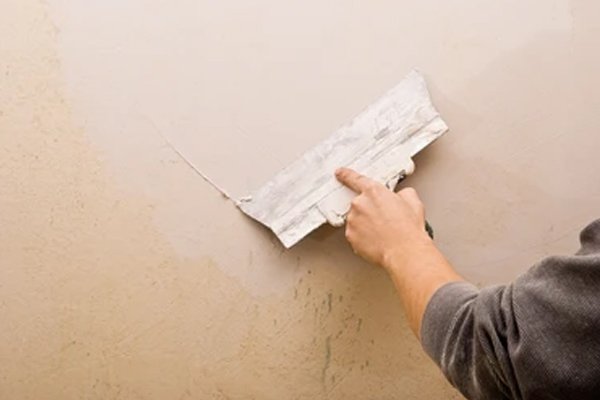
(+91) 82706 58519
Customer Care Number
info@technychemy.in
Email address
Tiruchirapalli, IN
Address location
Customer Care Number
Email address
Address location


Crack filling is the process of repairing and sealing cracks in various surfaces, such as walls, floors, pavements, and other structural elements. This technique is used to prevent further deterioration, restore the structural integrity of the surface, and create a smooth, even finish. Crack filling is essential in maintaining the durability and appearance of any structure, whether it’s residential, commercial, or industrial.

Flexible and water-resistant, ideal for small cracks in walls and ceilings.
Strong and durable, used for structural cracks in concrete and other heavy-duty surfaces.
Expanding sealants that provide excellent flexibility and are suitable for a wide range of applications, including pavements and driveways.
Commonly used for larger cracks in masonry and concrete, offering a solid, long-lasting repair.
Ideal for areas exposed to moisture, such as bathrooms and kitchens, due to their waterproofing properties.

Residential Driveways and Sidewalks
Prevents cracks from widening due to weather exposure and heavy foot traffic, extending the life of outdoor surfaces.
Commercial Parking Lots
Maintains the integrity of parking areas by sealing cracks that can lead to potholes and uneven surfaces, ensuring a safe and smooth experience for vehicles.
Industrial Floors
Addresses cracks in concrete floors subjected to heavy machinery and equipment, preventing further damage and ensuring a safe working environment.
Building Foundations
Fills cracks in foundations to prevent water infiltration and structural weakening, crucial for maintaining the stability of buildings.
Roadways and Highways
Specialized crack filling for asphalt roads helps prevent crack propagation, reducing the need for extensive resurfacing and ensuring smoother, safer driving conditions.
Bridges and Overpasses
Critical in maintaining the structural integrity of bridges by sealing cracks that could lead to significant deterioration due to environmental factors.
Waterproofing in Bathrooms and Kitchens
Fills cracks in tiles and grout to prevent water seepage, mold growth, and damage to underlying structures.
Historical Buildings
Used to restore and preserve the integrity of historical structures, ensuring that cracks do not compromise the building’s aesthetic and structural value.
Airport Runways
Seals cracks in runways to maintain smooth surfaces for aircraft landings and takeoffs, preventing damage to planes and ensuring passenger safety.
Swimming Pools
Repairs cracks in pool surfaces to prevent water loss and structural damage, ensuring the longevity and safety of the pool.
By sealing cracks, you prevent water, dirt, and other contaminants from entering, which can cause further deterioration.
Filling cracks restores the strength and stability of the surface, preventing costly repairs down the line.
Crack filling results in a smooth, seamless surface, enhancing the appearance of walls, floors, and other structures.
Properly filled cracks can significantly extend the life of the surface, reducing the need for premature replacements.
Regular crack filling is a cost-effective way to maintain surfaces, avoiding more extensive and expensive repairs in the future.

With three decades of experience, Techny Chemy is a trusted leader in thermal insulation coatings and crack filling solutions, delivering proven results across various industries.
We control the entire production process, ensuring that every product meets the highest standards of quality and consistency.
Our commitment to research and development means you receive the most advanced, effective, and innovative solutions tailored to your specific needs.
We offer personalized approaches to meet the unique requirements of each project, ensuring optimal performance and satisfaction.
Our long-standing reputation for excellence is backed by a strong track record of successful projects and satisfied customers, making us the go-to choice for quality and reliability.
Crack filling is the process of repairing and sealing cracks in concrete, asphalt, or masonry surfaces to prevent further deterioration, water ingress, and structural damage. It is necessary to maintain the integrity, safety, and longevity of structures.
Common causes include thermal expansion and contraction, settling of the foundation, shrinkage during curing, load stress, and environmental factors such as freeze-thaw cycles and moisture infiltration.
Materials used for crack filling include epoxy resins, polyurethane sealants, acrylic-based fillers, and cementitious grouts, each chosen based on the type, size, and location of the crack.
The right material depends on the crack’s width, depth, movement, and environmental exposure. For instance, epoxy is suitable for structural repairs, while polyurethane is often used for flexible, moving cracks.
Yes, crack filling can be applied to both horizontal and vertical surfaces. Specialized materials are available for different orientations to ensure proper adhesion and effectiveness.
The durability of crack filling depends on the quality of the material used, the method of application, and environmental factors. High-quality materials applied correctly can last for many years, protecting the structure from further damage.
Ignoring cracks can lead to more severe issues, including water infiltration, corrosion of reinforcement, increased cracking, structural weakening, and ultimately costly repairs or failure of the structure.
Crack filling involves placing filler material inside the crack to prevent further damage, typically used for non-moving cracks. Crack sealing, on the other hand, involves applying a flexible sealant over the crack to accommodate movement and protect against water and debris infiltration, often used for active or moving cracks.